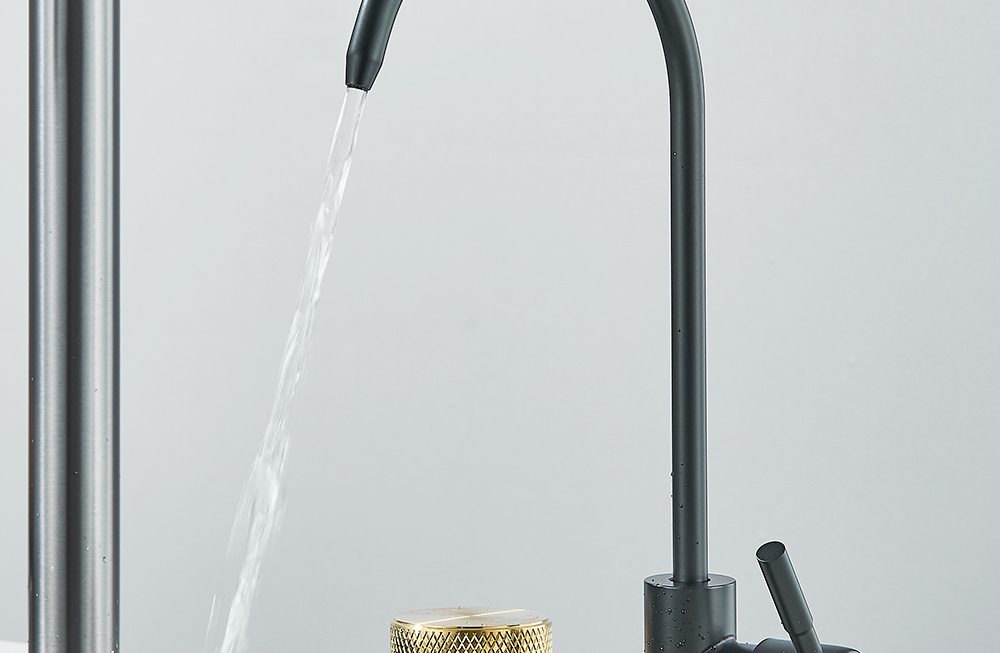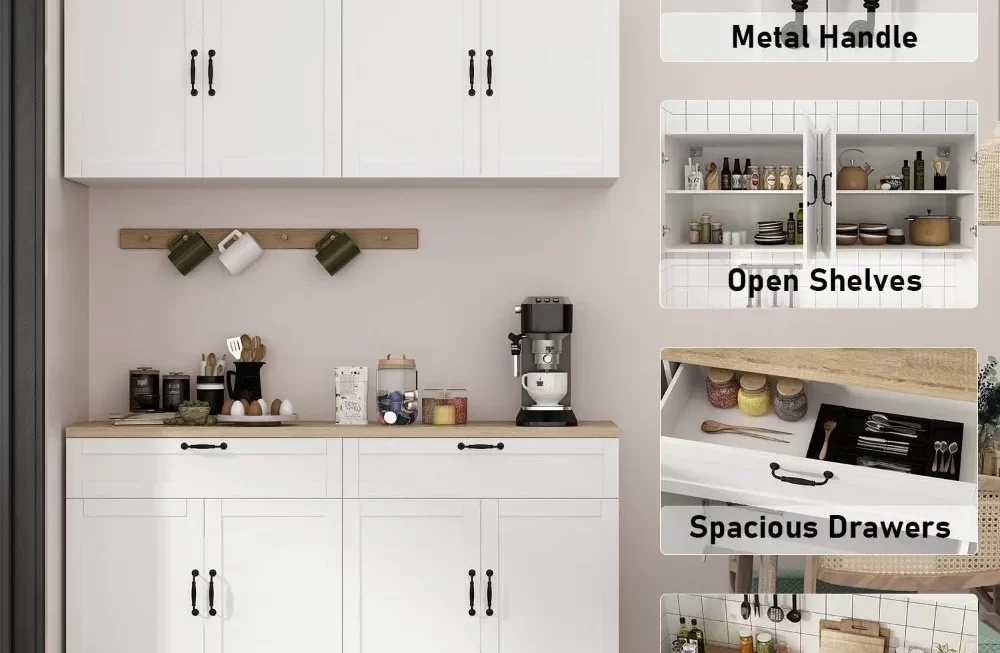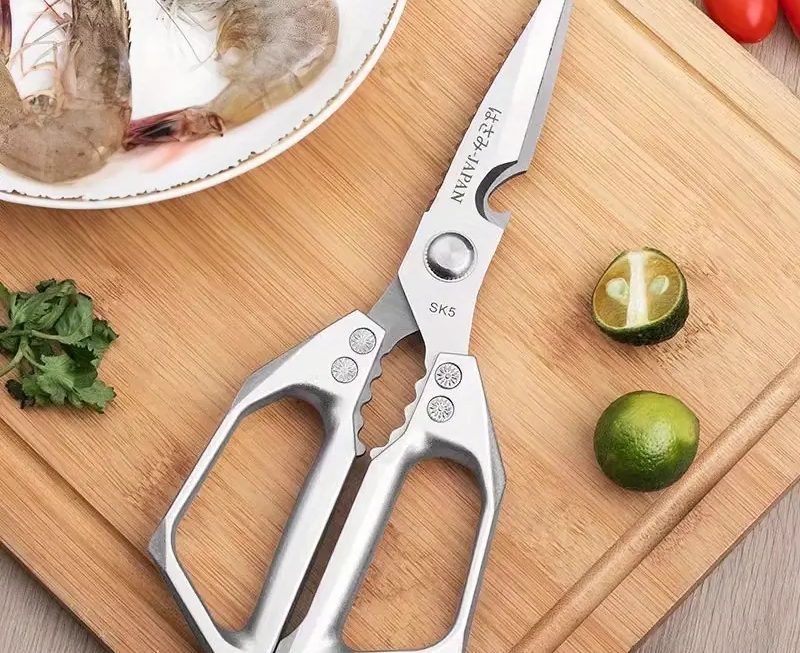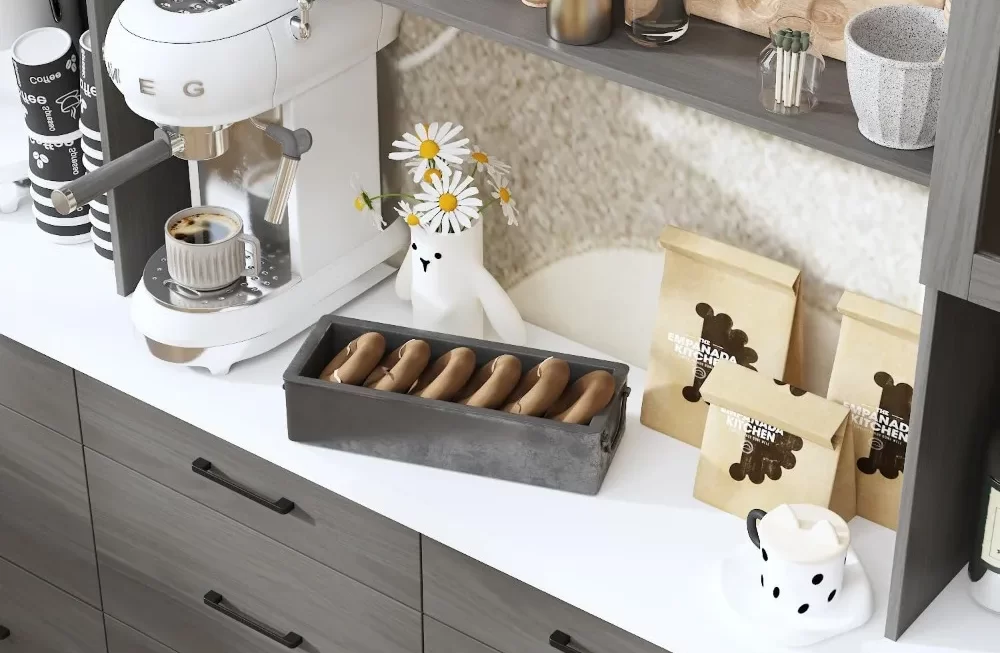Understanding the Causes of Low Water Pressure in Your Kitchen Sink
Low water pressure in your kitchen sink can be a frustrating experience. It can hinder your daily tasks, whether washing dishes, filling pots, or rinsing vegetables. Understanding what causes low water pressure in kitchen sink is the first step towards solving the issue. This article aims to explore the various factors that contribute to low water pressure in kitchen sinks.
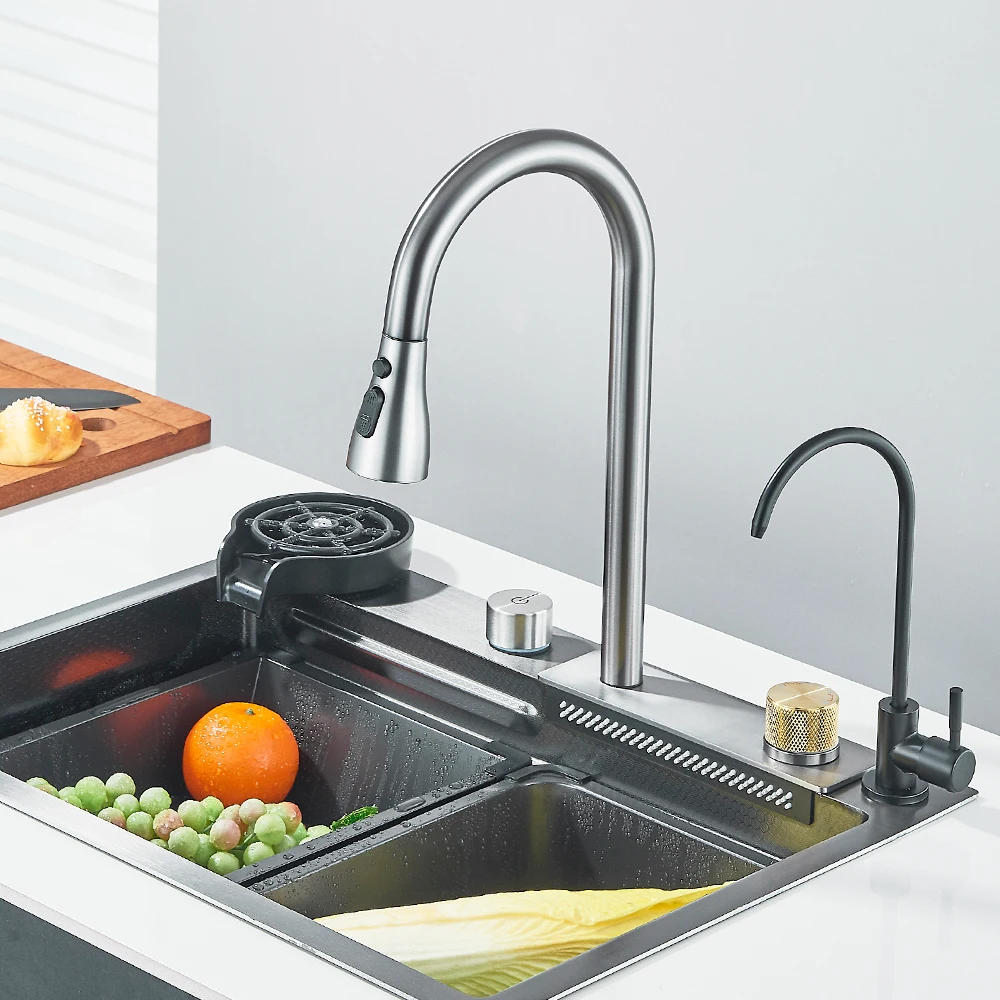
Common Causes of Low Water Pressure
Low water pressure can stem from several sources, including the plumbing system, fixtures, and more. Let’s take a closer look at some of these common causes.
1. Clogged Aerator
An aerator is a small screen located at the end of your kitchen faucet. It helps maintain a steady flow of water while conserving it. Over time, debris and minerals from the water can build up in the aerator. This buildup restricts water flow, reducing pressure.
To check if the aerator is causing the problem, you can remove it from the faucet. Clean it by soaking it in vinegar or using a brush to scrub away the debris. Once cleaned, replace the aerator and turn on the faucet. You should notice a significant improvement in water pressure.
2. Blocked Supply Lines
The supply lines connect your water source to the faucet. If these lines become blocked, they can greatly reduce water pressure. Blockages may result from mineral deposits, corrosion, or even a kink in the line.
To fix this issue, check for visible kinks or bends in the supply line. If you find any, straighten them out. If the issue persists, consider turning off the water and disconnecting the supply line. Inspect it thoroughly for any blockages. Flushing the line can also help clear out any built-up debris.
Plumbing System Issues
In some cases, low water pressure can relate to issues within the plumbing system itself. Let’s examine a few plumbing-related causes.
1. Main Water Supply Problems
Sometimes, the main water supply issue can cause low water pressure. For example, the city water supply may reduce its pressure due to maintenance work or demand fluctuations. Changes in pressure can affect your home, even if all your fixtures are functioning properly.
If you suspect a main supply issue, check with your local water utility company. They can provide information on any maintenance or outages in your area. Additionally, you can check other faucets in your home. If they experience similar pressure issues, the problem is likely with the main water supply.
2. Pressure Regulator Malfunction
Some homes have pressure regulators that help maintain consistent water pressure. If this device malfunctions, it may result in low water pressure in specific areas, including the kitchen sink. A faulty pressure regulator may need adjustment or replacement to restore proper pressure levels.
To check your pressure regulator, look for it near the water main entering your home. Inspect it for any visible damage or signs of wear. If you suspect it is the problem, you may need to consult a plumber for an expert evaluation and adjustment.
Fixture-Related Issues
In addition to plumbing system issues, low water pressure can also relate to problems with your fixtures. Here are a couple of key factors to consider.
1. Faulty Faucet Valve
The faucet valve controls the water flow from the supply lines to the faucet. If the valve is damaged, it may not open fully, which can restrict water flow. A faulty valve may cause low pressure, leading to inconvenience while using the sink.
To inspect the faucet valve, you will need to disassemble the faucet. Carefully remove the handle and other components to access the valve. Look for any signs of wear or damage. If you find any issues, you may need to replace the valve to restore normal water pressure.
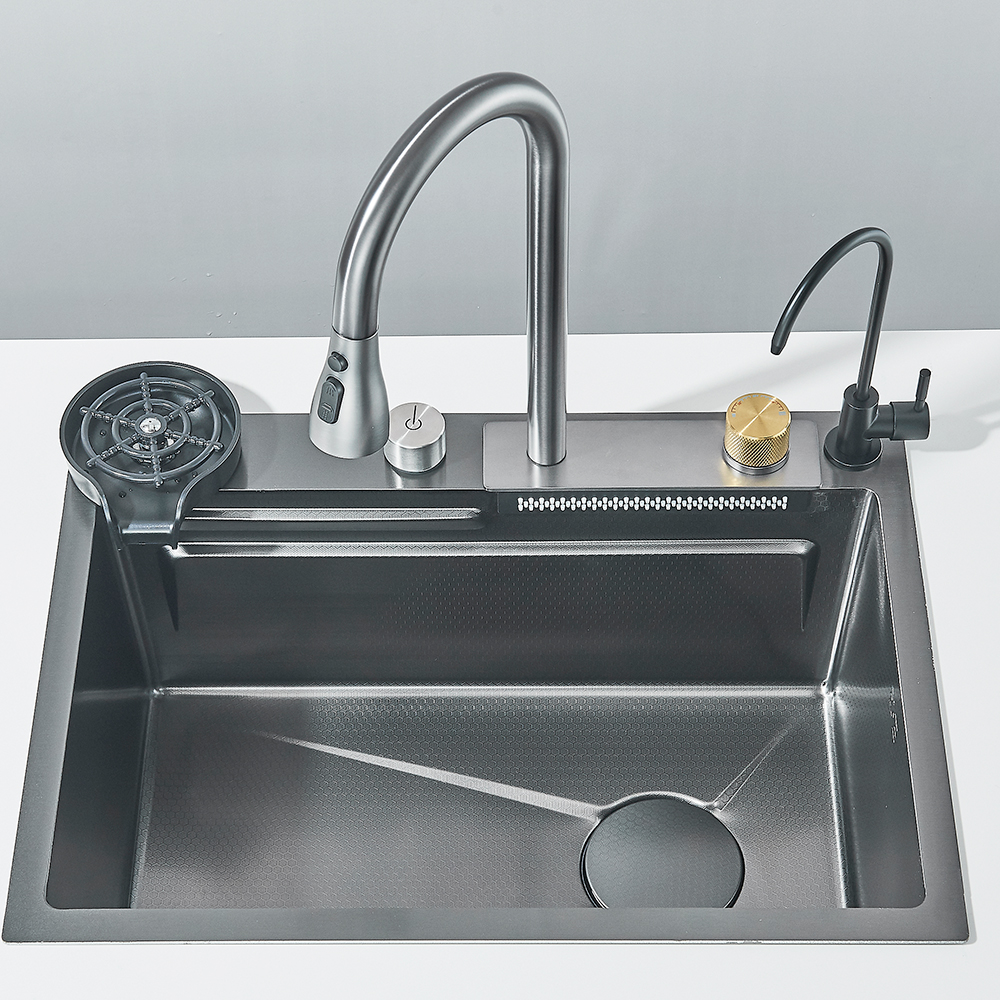
2. Age of the Fixtures
Older plumbing fixtures can suffer from wear and tear, leading to reduced water pressure. Over time, mineral buildup, corrosion, or even wear can affect performance. If your kitchen faucet is several years old, consider replacing it with a new one.
Newer faucets often come with improved designs that facilitate better water flow. Look for models that have been specifically designed for water efficiency without sacrificing performance.
Water Quality Factors
Sometimes, the quality of the water you’re receiving directly affects pressure levels. Hard water, for instance, can lead to “scaling” within pipes and fixtures. This scaling is often due to dissolved minerals like calcium and magnesium that stick to the insides of pipes, aerators, and faucets.
1. Hard Water Build-Up
Hard water can significantly reduce water flow. When the minerals settle, they create blockages and restrict water movement within the pipes. Over time, this can lead to low water pressure in your kitchen sink.
If you suspect hard water is a problem, consider using a water test kit. These kits can determine the hardness level of your water. If your water is indeed hard, solutions like water softeners may be necessary. Water softeners can help prevent mineral buildup, maintaining better water flow and pressure.
2. Water Contaminants
Contaminants in your water can also affect water pressure. Dirt, silt, and other particles may enter your plumbing and cause blockages. If you notice unusually low pressure, it’s worth checking the quality of your water.
Installing a water filter can help prevent contaminants from entering your plumbing system. Choose a filter designed to remove sediment and other particulate matter. This step can improve the quality and pressure of your water supply.
Seasonal Effects
Weather and seasonal changes can also impact water pressure in your kitchen sink. For instance, summer months may increase demand for water in your area.
1. Hot Weather Demand
During hot weather, many homeowners tend to use more water for gardening, filling pools, or washing cars. This increased demand can place strain on the local water supply, leading to lower water pressure in homes, including your kitchen sink.
If you live in an area with a high population density, it may be wise to monitor your water usage during peak times. If low pressure occurs mainly during hot months, it might just be a seasonal issue rather than a fault in your home plumbing.
2. Winter Freeze
Conversely, winter can also affect water pressure. Freezing temperatures can lead to frozen pipes, which restrict water flow. If you experience significant water pressure loss during the winter, inspect your pipes for freezing issues.
Keep a close watch on areas of your plumbing system that are not well-insulated. Use a space heater or heat tape on exposed pipes in extreme temperatures. Preventive measures can help mitigate freezing effects and maintain a steady water flow.
Diagnosing and Resolving Low Water Pressure
To effectively resolve low water pressure in your kitchen sink, you first need to diagnose the issue. Follow these steps to troubleshoot and address the problem.
1. Conduct Preliminary Checks
Start by checking the faucet itself. First, you might want to inspect the aerator. Remove, clean, and reattach to see if there is any improvement. If your kitchen faucet has a sprayer, check that as well. Sometimes, the sprayer could be the culprit affecting the overall water pressure.
Also, make sure that all other faucets in your home also have normal pressure. If only the kitchen sink has low pressure, the issue likely lies within the sink or its direct components. However, if other sinks have similar problems, it might be upstream in the plumbing system.
2. Consult a Professional
If the preliminary checks don’t reveal any obvious problems, it may be wise to consult a plumber. A professional can quickly identify issues that may not be easily visible or accessible. They have specialized tools and expertise available to resolve low water pressure issues efficiently.
Before you call a plumber, jot down any specific symptoms or observations. This information will help them diagnose the problem more accurately and save time during the service visit.
Prevention and Maintenance Strategies
To maintain optimal water pressure in your kitchen sink, adopting good practices can go a long way. Regular maintenance helps prevent issues that could lead to low water pressure.
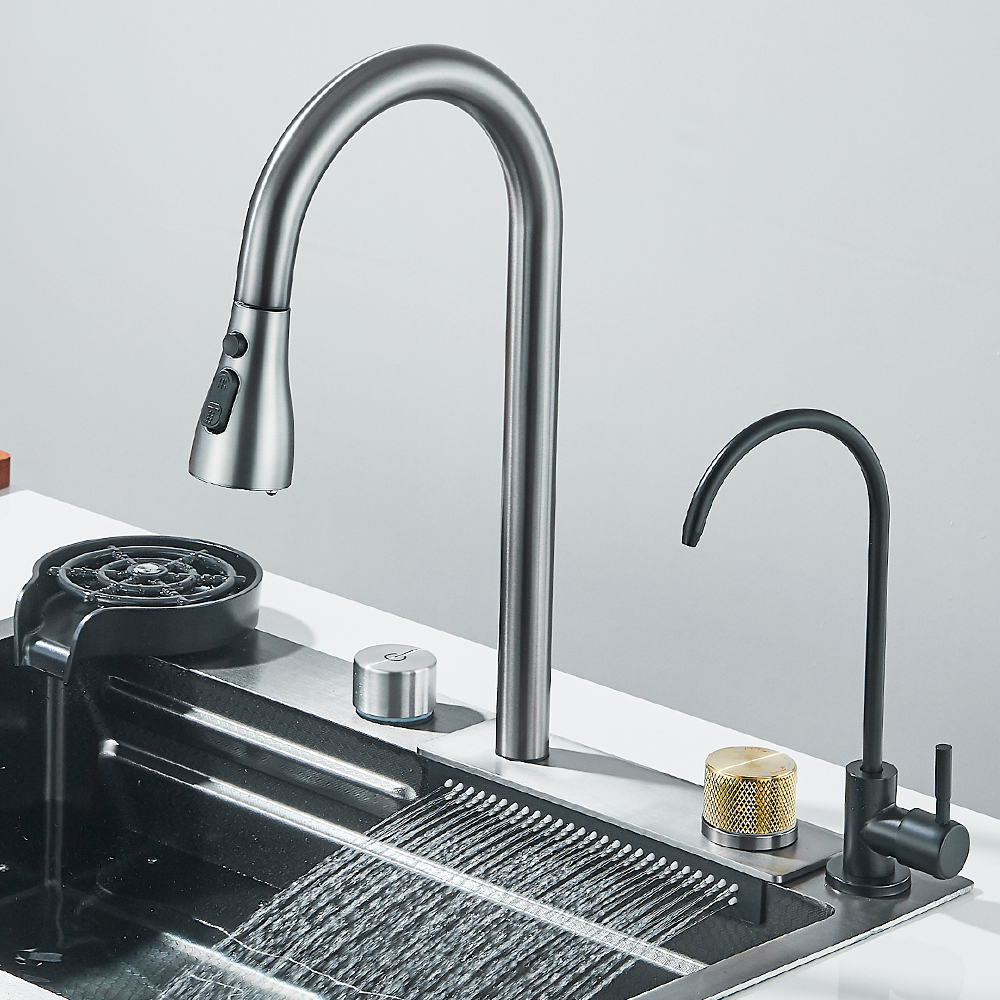
1. Regular Checks and Cleanings
Make it a habit to check your aerator regularly. Biannual cleaning can prevent mineral buildup and ensure smooth water flow. You can also clean showerhead and faucet features similarly to prevent scaling.
Additionally, inspect your pipes periodically for any signs of leaks or corrosion. Address any issues you detect as soon as possible to prevent further complications down the road. Regular upkeep can go a long way in avoiding unexpected drops in water pressure.
2. Upgrade Your Fixtures
If your kitchen faucet is old, consider upgrading to a modern fixture. Many newer faucets boast better technology that balances water pressure while using less water. Some even come armed with features that prevent clogging and scaling.
When selecting a new faucet, choose one that is compatible with your kitchen’s plumbing. Consult with a professional or read product reviews to find the best option that suits your needs. Investing in high-quality fixtures can save you from future headaches due to low water pressure.
Conclusion: Taking Charge of Your Kitchen Sink Water Pressure
Low water pressure in your kitchen sink can stem from various sources, including clogged aerators, plumbing issues, or quality of the water. Identifying and addressing these issues can restore normal water flow and improve your kitchen experience. By conducting regular maintenance, monitoring seasonal changes, and knowing when to call a professional, you can effectively manage your water pressure challenges. With a proactive approach, enjoy a steady flow of water, making kitchen tasks smoother and more efficient.
Staying informed about plumbing issues and preventive measures ensures that you can tackle low water pressure effectively. Whether through simple maintenance checks or timely professional assistance, you can keep your kitchen sink functioning at its best.
